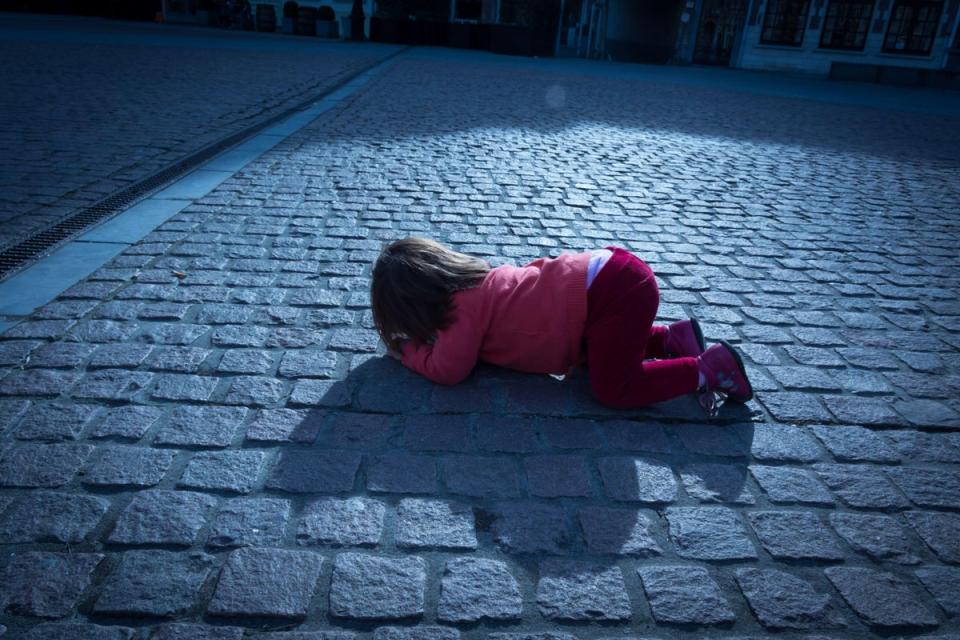6 ways to tackle bad behaviour so you and your young child feels good afterwards

Dealing with a young child’s bad behaviour can be one of the most stressful parts of parenting, and it rarely leaves parent or child feeling good.
But it doesn’t have to be that way, insists clinical psychologist and parenting expert Dr Becky Kennedy, who’s come up with practical strategies for more peaceful resolutions of child behavioural problems through helping parents understand their child’s emotional needs.
“Not every single tactic will be applicable to every single kid – only you know your child’s individual needs – but these strategies will help you think differently when challenges arise, and empower you to tackle these moments in ways that feel good to you, and safe to your child,” promises Kennedy, founder of the global parenting community Good Inside (goodinside.com), and author of a new book of the same name.
Tantrums are not manipulation.
Instead of: "I'll never give into a tantrum."
Remember this: "I can say no... and still show my child compassion and validation."
Even in tough moments, you are on the same team as your child.— Good Inside (@GoodInside) September 13, 2022
“The key is to see behaviour as a clue to what a child needs, not as a measure of who our child is. In tough moments, we look at a kid like they are a good kid having a hard time – not a bad kid doing bad things. And so, we see bad behaviour as a sign that a child needs our help.”
Kennedy explains that parents need to differentiate between the child’s behaviour and their identity so the child continues to feel good inside. “Kids have to feel good on the inside before they can act ‘good’ on the outside,” she stresses. “Most parenting approaches to bad behaviour make a kid feel bad inside – punishments, time-outs, yelling.
“This makes change impossible because not only do kids not learn the coping skills they need to change, they’re also overwhelmed with fear and shame because their parent – their most important attachment figure – just completely disconnected from them.”
Here, Kennedy outlines some classic ‘bad’ behaviours and explains how to handle them so children and parents feel good inside…
1. Child hits her younger brother
A young toddler hits her little brother when he knocks over her block tower. “Look at the hitting not as a sign that you have a ‘bad’ child but as a sign she needs help,” Kennedy urges.
She explains that parents should step in to separate the children so the hitting stops, saying, ‘I won’t let you hit’ to establish that you’re the leader and you’ll help keep them safe. Then, connect with both kids, saying something like: ‘Hitting isn’t ok. I’m here,’ to the child who was hit, and ‘You’re allowed to be cross your tower fell. You’re not allowed to hit,’ to his sister.
Now, outside the moment, say something to the hitter about it being hard to have a little brother, how you felt the same about your sister, and it’s annoying when they get in your space, to build connection and de-shame their jealous and frustrating feelings.
Kennedy says parents then have the alliance to help build a new skill, so they might then suggest building another tower together, with the parent pretending to be the little brother knocking it down and practising a way for his sister to make it clear she’s mad, but without hitting. Kennedy explains that this role playing helps toddlers build a new circuit for coping with frustration, “one they can draw on when another tricky moment happens in the future”.
2. Fighting over toys

Kennedy advises parents to take the toy and say it’s tricky to have two children and only one toy, before asking: ‘I wonder what we could do?’. Then, “Pause and look curious – like you truly need your kids’ help solving this situation,” she advises.
“Your children may not come up with an idea, but what you’re doing is critical – you’re wiring pause and reflection and connection after escalation and arguments – and this will be stored in their bodies and help them in the future.”
She says children may be less interested in the toy, or one child may allow the other to use it. If not, suggest one plays with a different toy for a bit and then they swap, under the parent’s watchful eye.
3. Slapping
Stop the behaviour and show the child something else they can do, like hitting a pillow, to express that urge, Kennedy advises.
4. Whining
Tell yourself you can cope with the whining, and then crouch down to your child’s level and say you know they have something important to tell you and you know they can say it another way.
5. Losing your cool with your child
Repairing with yourself and your child is critical, says Kennedy, who explains that if parents lose their temper with their child, they should find a quiet place and tell themself they’re a good parent who shouted, but they didn’t mess up their child forever and it can be repaired. Then they can apologise to their child, say they’re trying to manage their feelings, and say ‘I love you’.
Kennedy says: “Repair is the single most important parenting strategy because it allows you to generate a different ending to the moment with your child – an ending that feels much better than the one where there was yelling and disconnection.”
6. Tantrums
A parent’s job is to keep calm and keep their child safe during a tantrum, rather than stop it, explains Kennedy.
So if there’s hitting, throwing or potentially harmful behaviour, they should step in with an ‘I won’t let you’ phrase like ‘I wont let you hit me. You can hit the floor here’.
Then, once you’ve assured a child’s safety, focus on your breathing. “Your calm presence during your child’s tantrum teaches them and gives them everything they need – they feel your regulation and borrow it to reground their own bodies,” says Kennedy, who suggests parents say supportive words as well.

Good Inside – A Practical Guide to Becoming the Parent You Want to Be by Dr Becky Kennedy is published by Thorsons, priced £14.99. Available now.

 Yahoo News
Yahoo News 
